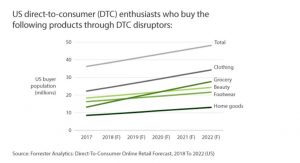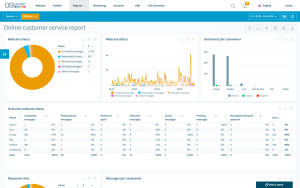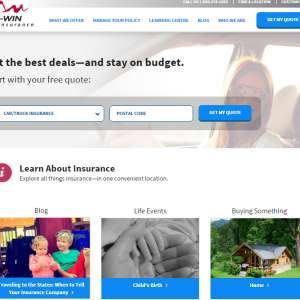It’s a simple guide for marketers and product creators aimed to help you navigate MVP marketing. Here I’m sharing my experience-based practices and approaches.
You could often hear that a minimum viable product isn’t a product but a process. It’s very true. A minimum viable product is an idea deployed within minimum functionality to communicate and demonstrate a product’s value to customers. An MVP is a flexible unity that should quickly evolve according to insights gained during the interaction with real users in a real market environment.
The primary goal of MVP marketing is to build excitement around the startup idea and encourage users to participate in co-creating a product by sharing their insights, expectations and needs with a startup. MVP marketing is a complex process that combines building brand awareness, driving social buzz around the product and constant learning from interactions with customers.
MVP marketing is an approach that allows a startup to explore its target audience, attract early adopters, engage investors, and earn the first customers’ trust. Here I will share a few simple steps that will help you navigate MVP marketing.

- Source: Pexels
MVP Idea Exploration
If you’re a marketer newly involved in the project, your journey should start with product exploration. Very likely, your team has already done some initial research of the market, audience, competitors and opportunities. Probably, they even have a pitch deck. Familiarize yourself with all existing startup materials related to product and market investigations.
You need to understand the product idea inside out, core functionality and how it helps people solve their problems. It will help you choose the right marketing direction and messaging strategy. Of course, this is not enough to have a profound understanding of the digital landscape where you’re going to deploy your MVP marketing. The next step is your own, more marketing-oriented research.
MVP Marketing Strategy
An MVP marketing strategy is a roadmap that embraces your MVP’s marketing from step one to pre-launch and even post-launch marketing campaigns. It usually includes defining marketing objectives and channels (such as branding, blog marketing, social media marketing, influencer marketing, PR activity) with a brief explanation of everything to be done in each area. After competitor research, you will be able to complete your marketing strategy with “sub-strategies” developed for each marketing direction (like blog marketing strategy, social media strategy and so on).
Competitor Marketing Research
Next, I recommend investigating at least your six most powerful competitors. Explore their brand identity to understand how your startup can stand out from them. Investigate which social media platforms that are present and how they market there. It will help you learn from their marketing wins and failures, figure out what content resonates with the audience and shape a better understanding of your social media marketing.
What to explore if your competitors don’t have digital marketing
If you operate in the industries soaked with traditionalism (like finance, healthcare, education, etc.) or very specific areas where it’s difficult to market or stand out (let’s say energy, embryonic nutrition or gear manufacturing), you may find out that your competitors’ marketing is absent at all or it’s very outdated, “dry,” and unengaging.
These companies might have made their names and became industry leaders many years ago due to a range of other factors besides marketing. Or, having been operating mostly offline for many years, they have appeared to be unready for the COVID reality and have a weak digital presence today. So, what to do if you faced such an expected problem?
The solution. After investigating your industry’s marketing giveness, you may start exploring brands with strong marketing in other industries. You will be surprised about how much you can learn from retail and food&beverage brands. You can adapt their marketing approaches to your industry and give birth to a very “fresh” and innovative marketing stream in your niche. I encourage not stealing but learning from other smart people. Leaders are the best teachers, no matter the industry.
Do you need to create a marketing strategy for a bank or fintech startup? Why not check how McDonald’s, Apple, Washington Post, Deloitte, Bloomberg, Red Bull, Dunkin’ Donuts, or Nike run their marketing? If you market to a very specific demographic group, I recommend choosing brands with nearly the same target audience for your research. It will give you additional insights into what content engages your audience.
Customer Persona Creation
If you ever asked me whether marketing is a science or art, I would say that it combines both. Don’t miss a “scientific” part when building your marketing strategy. Customer persona research is one of its components. A customer persona is an ideal customer model that includes demographics (age, gender, location, and occupation) and psychographics (motivations, likes, dislikes, and pain points). It allows you to understand how to approach your customers in marketing.
Since an MVP stage implies creating brand awareness and social buzz around a product idea rather than selling or building complicated sales-marketing funnels, I would recommend switching to a “content persona” research to figure out how to market your MVP. It slightly differs from a customer persona by providing more profound insights needed to build precisely targeted content.
Content Marketing
An MVP marketing strategy usually includes four main directions: social media marketing, blog marketing, public/media relations, and influencer marketing. Let’s take a closer look at them.
Social media marketing
Competitor research and customer persona will help you understand on which social media platforms your audience is the most active. Keep in mind that there are always two reasons why your competitors aren’t present on some social network. The first is that they have found it ineffective to market on this platform.
The second is that they are just missing their audience there. Probably, they haven’t had enough time or resources to embrace that platform. Anyway, you should explore their presence/absence on every social network and opportunities for your brand to shape a comprehensive marketing vision.
Blog marketing
You may need a blog for your MVP. Blog marketing allows you to reach several marketing objectives simultaneously:
- to attract people interested in topics related to your MVP and build brand awareness;
- to start building trust with the audience by providing valuable content that helps and inspire them;
- to start ranking by the topic-related keywords in the search engine results;
- to build backlinks from popular media outlets that target your audience and drive website traffic;
- to use a blog as a channel for brand updates and step-by-step product presentation.
For an MVP stage, I would advise paying more attention to the creativity of content. It’s not enough to rely just on SEO. An MVP in all its manifestations, from the product itself to content marketing, is about innovation, standing out, and creativity.
PR and influencer marketing
Collaborate with those who already have your audience’s ear: their favorite media outlets and influencers. Both PR activity and influencer marketing can amplify your marketing efforts and multiply brand awareness. They usually work as the most powerful practices for building brand awareness – one of the most critical MVP marketing objectives. You can read more about the power of influencer marketing in my recent article.
MVP Landing Page
The most important thing to remember is that an MVP landing page is not a product website. It doesn’t aim to sell a product but to tell a story about your product idea. It should create intrigue around your startup, provide a quick understanding of your MVP and engage the audience, investors and early adopters.
Keep just essentials on your MVP landing page, like how your product works, what user problems it solves and your brand’s vision/values. An MVP landing page should be minimalistic but provide all necessary information about the product, how to reach out to you, and links to your brand’s social media profiles. You can suggest users subscribe to your startup’s updates and notify them later about your MVP launch.
Investor Pitch Deck
A pitch deck is your MVP intro that targets inventors. Here you can find an 11-step checklist of everything your presentation should have to engage investors and raise funds:
- Write a concise and appealing project description
- Clearly formulate a problem
- Introduce your product as a solution
- Show the results of your target market research (Total Available Market (TAM), Serviceable Available Market (SAM) and Serviceable Obtainable Market (SOM))
- Build a business model canvas
- Include a competition map & showcase advantages
- Create a customer profile
- Showcase your product roadmap
- Describe customer acquisition models
- Introduce your team
- Mention your financials
You can learn more details and valuable founder tips on how to create a successful investor pitch deck in this article by Dima Venglinski, an experienced tech entrepreneur who has launched several successful startups and knows this process inside out.
I hope this brief MVP marketing guide will help you build a robust strategy and tight-knit community around your brand.
Business & Finance Articles on Business 2 Community
(44)







